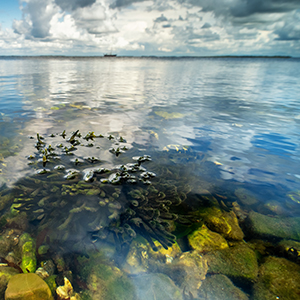IMOST: a database for non-marine ostracods in the Iberian Peninsula, the Balearic Islands and Macaronesia

Submitted: 15 December 2022
Accepted: 3 February 2023
Published: 15 February 2023
Accepted: 3 February 2023
Abstract Views: 627
PDF: 320
Supplementary: 74
HTML: 15
Supplementary: 74
HTML: 15
Publisher's note
All claims expressed in this article are solely those of the authors and do not necessarily represent those of their affiliated organizations, or those of the publisher, the editors and the reviewers. Any product that may be evaluated in this article or claim that may be made by its manufacturer is not guaranteed or endorsed by the publisher.
All claims expressed in this article are solely those of the authors and do not necessarily represent those of their affiliated organizations, or those of the publisher, the editors and the reviewers. Any product that may be evaluated in this article or claim that may be made by its manufacturer is not guaranteed or endorsed by the publisher.
Similar Articles
- Simona Musazzi, Martina Austoni, Aldo Marchetto, A georeferenced dataset of living and sedimentary diatoms in Lake Maggiore , Journal of Limnology: Vol. 82 No. s1 (2023): Georeferenced freshwater biodiversity data
- Liisa Nevalainen, Tomi Petteri Luoto, Sedimentary chydorid (Cladocera) ephippia in relation to lake ecological quality in the Austrian Alps , Journal of Limnology: Vol. 72 No. 1 (2013)
- Lucia Montes-Ortiz, Manuel Elias-Gutierrez, Faunistic survey of the zooplankton community in an oligotrophic sinkhole, Cenote Azul (Quintana Roo, Mexico), using different sampling methods, and documented with DNA barcodes , Journal of Limnology: Vol. 77 No. 3 (2018)
- Kay Van Damme, Artem Y. Sinev, Tropical Amphi-Pacific disjunctions in the Cladocera (Crustacea: Branchiopoda) , Journal of Limnology: Vol. 72 No. s2 (2013): Freshwater Invertebrates of Southeast Asia
- Bernadett Boóz, Arnold Móra, Márk Ficsór, Petr Pařil, Raúl Acosta, Bea Bartalovics, Thibault Datry, José Maria Fernández-Calero, Maxence Forcellini, Marko Miliša, Heikki Mykrä, Bálint Pernecker, Vendula Polášková, Luka Polović, Henna Snåre, Zoltán Csabai, Neglected dipterans in stream studies , Journal of Limnology: Vol. 83 (2024)
- Yamila S. Battauz, Susana B. José de Paggi, Juan C. Paggi, Marcelo Romano, Ignacio Barberis, Zooplankton characterisation of Pampean saline shallow lakes, habitat of the Andean flamingoes , Journal of Limnology: Vol. 72 No. 3 (2013)
- Angela Boggero, Elzbieta Dumnicka, Riccardo Fornaroli, Daniele Paganelli, Silvia Zaupa, Geotargeting spatial and temporal data of Italian freshwater high-altitude macroinvertebrates , Journal of Limnology: Vol. 82 No. s1 (2023): Georeferenced freshwater biodiversity data
- Pál Boda, Arnold Móra, Zoltán Csabai, AMI-KMNP dataset: Occurrence records of aquatic macroinvertebrate species from a 10-year-long biodiversity survey in SE Hungary , Journal of Limnology: Vol. 82 No. s1 (2023): Georeferenced freshwater biodiversity data
- Valeria Rossi, Catia Maurone, Giorgio Benassi, Ireneo Ferrari, Reproduction of Daphnia pulex in a Northern Italy pond , Journal of Limnology: Vol. 73 No. 3 (2014)
- Lorena Rebecchi, Diane R. Nelson, Roberto Bertolani, Paulo Fontoura, Front Matter , Journal of Limnology: Vol. 72 No. s1 (2013): 12th International Symposium on Tardigrada
<< < 4 5 6 7 8 9 10 11 12 13 > >>
You may also start an advanced similarity search for this article.

 https://doi.org/10.4081/jlimnol.2023.2115
https://doi.org/10.4081/jlimnol.2023.2115






